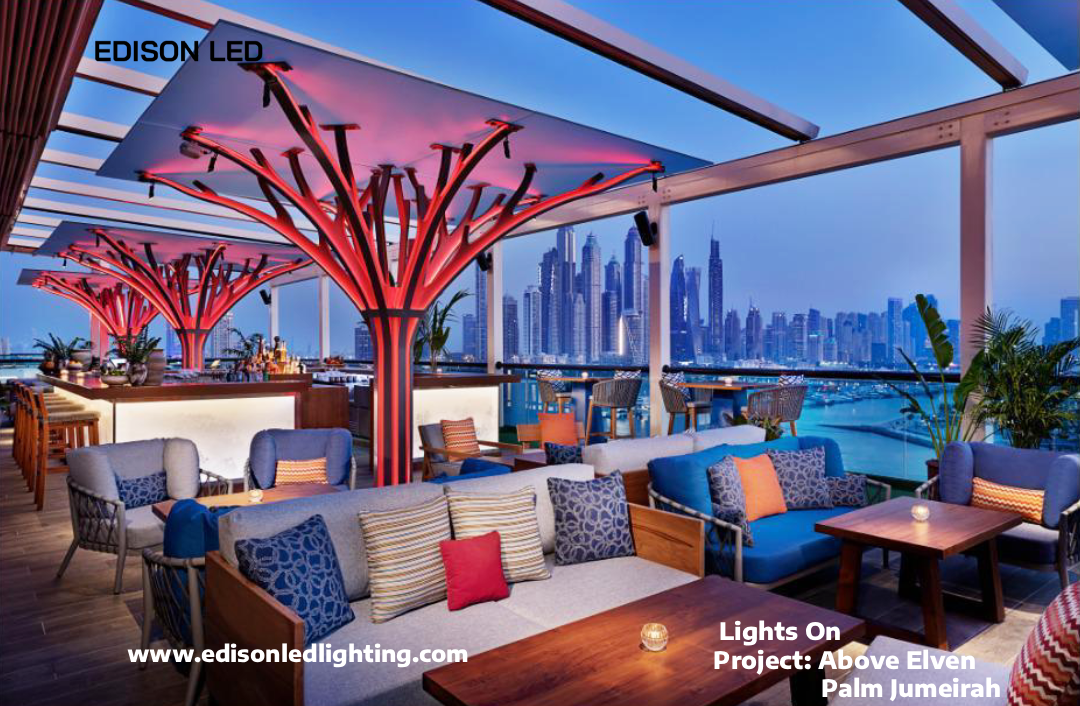Modern lighting is LED- and smart-first, driven by energy efficiency, human-centric (circadian) design, and cozy – yet sculptural fixtures that connect indoors to nature.
Lighting today does more than illuminate; it sets mood, supports health, saves energy, and connects to smart home/building systems. Whether you’re designing a home, office, retail space or hospitality venue, the best solutions pair technology (LEDs, controls, IoT) with human-centered design and materials that match the space’s aesthetic and purpose.
Market snapshot
The smart & LED lighting market is expanding quickly: major market reports estimate global smart lighting was worth mid-teens to low-20s billion USD in 2024–2025 and forecast double-digit CAGR over the next 5–10 years as IoT, regulation and falling LED costs accelerate adoption. Global Market Insights Inc.+1
What that means for designers and buyers: manufacturers continue to invest in tunable fixtures, integrated controls, and Matter/standards-compatible devices – prices are coming down while interoperability and features improve.
Top modern lighting solutions (what to specify & why)
- LED + tunable white fixtures (recessed, linear, panels)
Why: Highest energy efficiency, long lifetime, and tunable white (2700K–6500K) supports both ambience and circadian needs. Use high-CRI (>90) LEDs where color accuracy matters (kitchens, retail
Best for: homes, offices, retail, galleries.
2. Human-centric / circadian lighting systems
Why: Dynamic lighting that shifts intensity and color temperature through the day improves alertness, mood and sleep patterns-increasingly adopted in offices, schools and healthcare. Consider HCL in workplaces and wellness spaces.
3. Smart controls & networked systems (Zigbee, Matter, Wi-Fi)
Why: Scheduling, scenes, occupancy sensing, and energy monitoring deliver comfort and savings. Newer products support Matter for easier cross-brand compatibility (example: recent smart lamps and ceiling lights launched with Matter support). Integrate motion sensors and daylight harvesting for commercial savings.
4. Layered lighting approach
Why: Combine ambient (general), task (work), accent (art/architecture) and decorative (fixtures) lighting. Layering produces flexibility: dimmable ambient LEDs + focused task lights + accent LED strips or adjustable spots.
5. Architectural and linear LED (coves, recessed channels)
Why: Clean lines and concealed sources fit modern minimalism and allow dramatic washes or feature illumination. Excellent for open-plan spaces and contemporary residential projects.
6. Sculptural pendants & biophilic fixtures
Why: Trend toward fixtures that double as art-organic shapes, warm materials (wood, woven fibers), and plant-inspired forms bring warmth and human scale to minimal spaces. Designers favor tactile materials to counter cold minimalism.
7. OLED & low-glare panels (selective use)
Why: Ultra-thin, diffuse light with excellent uniformity-great for premium interiors, hospitality and gallery spaces where soft, shadow-free illumination is desired. Use selectively due to current cost.
How to choose the best solution (practical checklist)
- Define function: task, relaxation, display, or wellness?
- Prioritize CRI for color-sensitive areas (CRI 90+).
- Choose tunable white for multi-use rooms and HCL needs.
- Add smart controls for schedules, scenes, and energy tracking.
- Layer light: at least ambient + task; add accent and decorative as needed.
- Match fixture scale to room size-designers are moving away from under-scaled pieces. Homes and Gardens.
- Factor lifecycle cost (energy + maintenance), not just initial price.
Cost vs ROI-what the market shows
Upfront cost for smart and human-centric systems is higher than basic LEDs, but energy savings, longer lamp life, and productivity/wellness gains (in workplaces and healthcare) often justify investment. Incentives and stricter energy codes in many regions also improve payback timelines.
Design & aesthetic trends to follow (2024–2026)
Move from ubiquitous vintage/industrial to warmer, more sculptural fittings and biophilic materials. Homes and Gardens+1
Minimalist fixtures remain popular, but with higher polish and considered craft (not purely utilitarian). crystalflashco.com
Integrated lighting (hidden channels, cove) for seamless architecture.
Recommended product types (by room)
- Living room: dimmable ambient LED + layered accents + statement pendant.
Kitchen: high-CRI task lighting over counters + recessed ambient + under-cabinet linear LEDs. Bedroom: tunable white overhead + bedside dimmable task lights; circadian schedule. Office: human-centric ceiling systems + adjustable desk task lamps + occupancy controls. Retail/Hospitality: high-CRI spotlights for displays + warm decorative fixtures to build atmosphere.
Sources (selected)
Market growth & smart lighting forecasts; smart lighting reports. Global Market Insights Inc.+1
Human-centric / circadian lighting research and benefits. MDPI+1
Design and trend notes (biophilic, sculptural fixtures, shifting trends). Wipro Lighting+1 Recent Matter-compatible smart product launches (example devices).

